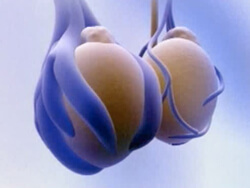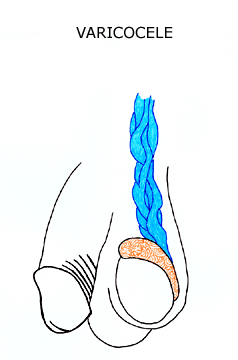Today's topic affects men's health, and we will talk about varicocele. What is it and how to treat it? Varicocele - is a varicose pathology that affects the vascular system of the testicles and is characterized by expansion of the veins of the testicles and incontinence of urine (or sperm).
Varicocele is found in 10-20% of the male population, usually from age 15 to 25. The disease can make itself felt already in pre-adolescence (found in 2-2.5% of children from 7 to 10 years old). The constitutional characteristics of young people also play an important role in the development of the disease. Varicocele often occurs in tall guys with long legs. This pathology is quite common and is observed in 30-40% of men with fertility problems.
Causes of varicocele
The pathogenesis of varicocele has not yet been fully elucidated. Scientists believe that the cause of the disease lies in the congenital weakness of the venous walls. Varicocele can cause spermatogenesis disorders (thermal changes in the testes, venous congestion leads to hypoxia, toxic effects of free radicals), which leads to a change in the number and motility of spermatozoaв.
Symptoms of varicocele
In many patients, varicocele is generally asymptomatic. When the size of the pathology is sufficient to cause a symptom, we mainly have dull pain in the testicle, a feeling of heaviness in the scrotum and the problem of infertility.
Pain with varicocele provokes excessive blood pressure in the dilated veins. As the pressure increases, pain also intensifies, especially when the patient is in a standing position for a long period of time, heights, and at the end of sexual relations.
Diagnosis of varicocele
For the diagnosis of varicocele, a thorough examination of the scrotum by an andrologist, and Dopplerography of the testicles are necessary. Since varicocele can lead to a deterioration in sperm quality, it is advisable to pass a spermogram.
Treatment of varicocele
Treatment of the disease has the main goal of improving spermatogenesis or preventing its deterioration in the future.
A really effective way to treat the disease is surgery. The main indications for surgery: abnormal semen analysis or pain. Monitoring of sperm parameters should be done no earlier than 3-4 months after surgery.

















